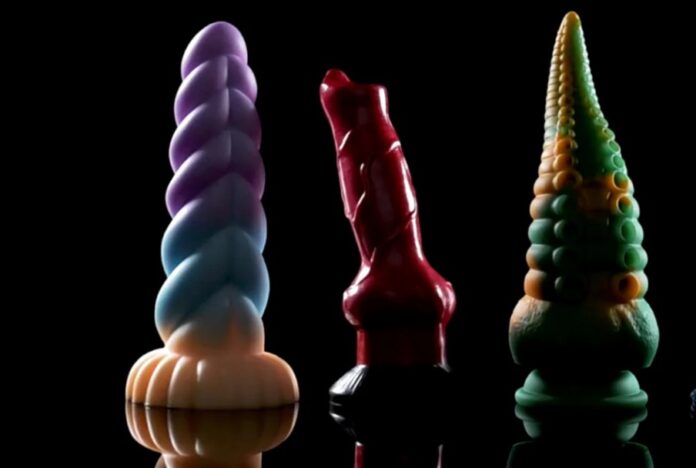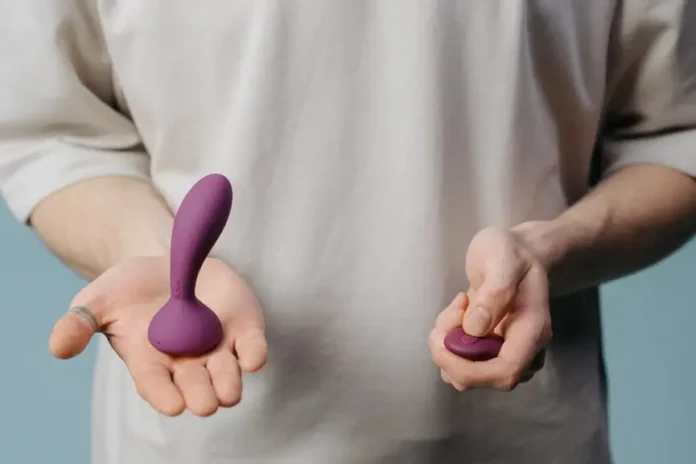Let’s get something straight: we can send humans to space, invent self-driving cars, and build apps that let us swap dog faces with our best friends. Yet, talking openly about something as normal as, well, pleasure devices still causes a collective gasp. Why? I have a lot of thoughts on this—and spoiler alert: none of them involve whispering behind closed doors. Let’s shake up the conversation. Ready?
Key Points:
- Society clings to outdated ideas about pleasure and morality.
- The stigma stems from culture, religion, and misinformation.
- Sex toys are tools of empowerment, not shame.
- Taboo topics thrive on secrecy and shame.
- Progress begins with open, honest conversations.
1. “Fantasy Dildos” and the Sky Ceiling

Before I go any further, let’s talk about one of the wildest, coolest corners of this conversation: fantasy dildos. Have you ever heard of AlienDildo store? It’s a whole galaxy of mythical, sci-fi-inspired pleasure… and yes, I said galaxy. If you’re someone with a vivid imagination (and who isn’t?), exploring their collection feels like stepping into a universe where anything is possible—sky ceilings included.
Let’s address the elephant in the room. Fantasy dildos represent more than just creativity. They symbolize freedom, individuality, and the ability to own your desires without judgment. The discomfort surrounding them isn’t about the product itself but society’s refusal to embrace openness. Why does expressing individuality with something like this make people so uneasy? The answer lies in centuries of ingrained stigma.
2. The Roots of the Taboo: A Brief History Lesson
Why is talking about pleasure devices such a scandal? Spoiler alert: it’s not because they’re new. People have been inventing them for centuries—yes, even in ancient civilizations. Cleopatra supposedly had a vibrating device powered by bees. (Talk about innovation, right?)
The difference is that modern culture slapped on a big fat “no-no” sticker somewhere between puritanical influences and religious dogma. For centuries, pleasure was tied to shame. Anything outside reproduction was labeled sinful or immoral. This wasn’t about protecting anyone; it was about controlling everyone. Suddenly, the idea of enjoying your own body became scandalous. Fast forward to now, and we’re stuck with the leftovers of that mindset.
3. Misinformation: The Root of All Weird Looks
Misinformation thrives when people don’t ask questions. I’ve heard everything—from “They’re dangerous” to “They’ll ruin real relationships”—and honestly, it’s laughable. Let’s bust some myths, shall we?
Here are a few common myths and the truths behind them:
- Myth 1: Toys Replace Partners
Truth bomb: No, they don’t. Toys complement relationships. They’re about enhancing experiences, not replacing anyone. - Myth 2: They’re Unsafe
When made by reputable companies, they’re perfectly safe. Just use proper cleaning methods and read the instructions. - Myth 3: Only “Certain Types” of People Use Them
Oh please. Pleasure isn’t reserved for a specific demographic. Everyone deserves it.
Misinformation thrives in silence. Breaking that cycle starts with educating ourselves and sharing accurate, non-judgmental information.
4. Why Society Still Clings to Outdated Beliefs
If you’ve ever felt judged for owning or even mentioning toys, you’re not alone. That shame comes from outdated beliefs deeply embedded in society. Let’s list the culprits:
- Cultural Conditioning: Many cultures view pleasure as something private or even shameful. People grow up avoiding honest discussions about their needs.
- Religious Dogma: For centuries, religion dictated how people lived their lives. Pleasure devices never stood a chance in that narrative.
- Media Representation: Ever notice how movies and shows portray people with toys? They’re usually awkward characters or “weirdos.” That’s a problem.
Add societal norms to the mix, and you get a perfect storm of judgment and misinformation. It’s time to dismantle those narratives.
5. Breaking the Silence: Why It’s Time to Talk
If no one talks about taboo topics, they stay taboo. Silence breeds shame. And let me tell you something: shame has no place in the bedroom. Here’s why speaking up matters:
- It normalizes conversations about health and happiness.
- It empowers people to make informed choices.
- It breaks down barriers created by misinformation.
I remember the first time I brought up the topic of toys with friends. The awkward silence lasted about five seconds before someone whispered, “Wait, what’s your favorite one?” By the end of the night, we were swapping tips like pros. Imagine if we all had that freedom. Open conversations create connection and dissolve judgment.
6. How Toys Empower, Not Shame
Let’s flip the script. Instead of seeing toys as taboo, think of them as tools. They teach people about their bodies, help them explore desires, and even improve relationships. What’s shameful about that?
Here’s a short list of benefits:
- Self-Awareness: Understanding your own body leads to confidence.
- Communication: Couples who explore together often build stronger connections.
- Stress Relief: Pleasure isn’t just fun; it’s good for your mental health.
Let’s stop seeing empowerment as controversial and start embracing it as essential.
7. Personal Anecdote: The First Purchase
I’ll never forget the first time I bought a toy. It was in a dimly lit shop with beaded curtains—very “1970s detective film” vibes. I walked in, all nonchalant, only to panic and grab the first thing I saw. The cashier smiled knowingly, like they’d seen this play out a million times. I left red-faced, clutching my brown paper bag like it was a state secret.
Years later, I laugh at that moment. It’s ridiculous how much stigma surrounds something so normal. Now, I shop online without a second thought.
8. Tackling Misrepresentation in Pop Culture
Pop culture has a way of shaping attitudes—for better or worse. Pleasure devices often get unfair representation on-screen. Think about the awkward characters or comedic relief tropes tied to owning toys. It’s time for better portrayals.
Examples of Positive Representation We Need:
- Show confident, empowered individuals using them without stigma.
- Include them as part of healthy relationships, rather than a punchline.
- Highlight self-care as a priority rather than a secret.
Representation matters. Normalizing the use of toys in media can go a long way in changing public perception.
9. Steps Toward Breaking the Taboo
Want to change how society views pleasure? It starts with us. Here are a few actionable tips:
- Educate Yourself: Knowledge is power. Learn about safe practices, reputable brands, and benefits.
- Start Conversations: Normalize the topic by discussing it openly with friends or partners.
- Support Inclusive Media: Demand better representation in TV, movies, and books.
- Shop Without Shame: Confidence is contagious. Be proud of your choices.
It doesn’t take grand gestures—small steps can create meaningful change.
10. Exploring the Role of Gender in Stigma
Let’s talk about the double standard. When men discuss pleasure, it’s often seen as natural or even celebrated. But when women openly embrace the topic? Cue the judgmental stares.
Society has long controlled women’s autonomy over their own bodies. Pleasure is part of that autonomy. Challenging these gendered stigmas means pushing back against outdated stereotypes. Everyone deserves the freedom to explore and enjoy without fear of judgment.
Conclusion: A Call to Action

Toys shouldn’t be shocking, and taboos shouldn’t hold us back. Talking openly creates a world where everyone feels empowered to live authentically. So next time the topic comes up, lean in—not out. Who knows? You might inspire someone else to ditch the shame and embrace their joy.
The conversation starts here. Let’s keep it going.







